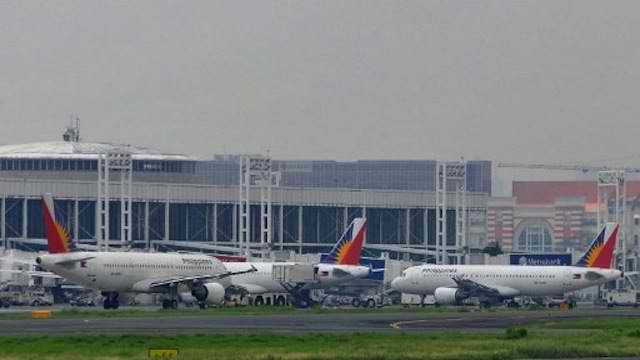SUMMARY
This is AI generated summarization, which may have errors. For context, always refer to the full article.

2008
January 17 – The US FAA downgraded the Philippines’ rating to Category 2 from Category 1, saying the Air Transportation Office (ATO) did not fully satisfy international safety standards set by the United Nations’ International Civil Aviation Organization (ICAO).
March 4 – President Gloria Macapagal-Arroyo signed into law Republic Act 9497, which abolished the ATO and created the Civil Aviation Authority of the Philippines (CAAP).
2009
October 19 – ICAO classified the Philippine aviation industry as a “significant safety concern” after CAAP failed to meet and implement safety standards that ICAO required.
2010
April 1 – Following the announcements of FAA and ICAO, the European Union (EU) banned Philippine carriers from flying to Europe.
2011
March 11 – President Benigno S. Aquino III ordered CAAP to get the Philippines out of Category 2 status.
2012
June 19 – Aquino appointed retired Lt Gen William K. Hotchkiss III as director-general of CAAP, effectively replacing Ramon Gutierrez. The appointment came after then Transportation Secretary Manuel Roxas expressed dissatisfaction over the inability of CAAP to get a status upgrade.
October – The ICAO Coordinated Validation Mission (ICVM) conducted a safety audit in the country, and found that 3 of 5 critical elements (Legal, Organization and Licensing) had been addressed.
2013
January – An FAA team reviewed the compliance of CAAP with international safety standards, and found out that it was still non-compliant with several requirements.
February 18 – The ICVM conducted another safety audit, and found that the remaining 2 critical elements (the OPS 1 Certification of Airlines in the Philippines and the Air/7 registration of Philippine-registered civil aviation aircraft) were already addressed.
March 4 – ICAO lifted its earlier classification of Philippine aviation, saying the country had made “corrective actions” that “successfully addressed and resolved the ‘significant safety concerns’ identified by the ICAO.”
March 25 – Aquino ordered CAAP to work double time to lift bans imposed by the US and Europe on local carriers.
June 11 – CAAP announced it would require all flight attendants to secure professional license as part of its efforts to efficiently regulate the industry and elevate the quality of cabin crew service.
June 25 – CAAP announced the suspension of two pilots of budget airline Cebu Pacific after the plane they were manning skidded off the runway of the Davao International Airport, resulting in the closure of the international gateway for two days.
July 10 – Following the lifting of the ICAO classification, the EU allowed Philippine Airlines (PAL) to fly to Europe.
July 17 – CAAP officials met with the airlines’ vice presidents for flight operations regarding the planned industry-wide increase in turnaround time to 45 minutes in an effort to boost safety following two landing mishaps involving Cebu Pacific planes in June.
July 23 – Records from CAAP’s Flight Operations Safety showed that the regulator was investigating and has penalized two South Korean airlines for various violations of the Philippine Civil Aviation Regulations.
July 25 – CAAP ordered local airlines to provide and shoulder the cost of food that their pilots, co-pilots, and other flight crew members needed while on duty, citing safety reasons and industry practice.
August 2 – CAAP placed Zest Air under “heightened” surveillance following a series of flight cancellations brought about by mechanical problems.
August 16 – The license of Zest Air was suspended due to its “series of serious deviations and infractions of the rules and standards prescribed under the Philippine Civil Aviation Regulations (PCAR).” The airline resumed operations on August 20.
2014
January – An FAA team conducted another audit review of the country’s compliance with aviation safety.
February 23 – CAAP approved the acquisition of 41 brand new units of Aircraft Rescue and Fire Fighting (ARFF) vehicles to improve the firefighting capability of major commercial airports in the country.
March 26 – FAA returned to the country to validate the results of its January audit review.
April 10 – After over 6 years, the Philippines regained its Category 1 status, allowing local carriers to launch and add flights to the US. Hours after the FAA announcement, Cebu Pacific became the second local carrier allowed to fly to Europe. – Rappler.com
Add a comment
How does this make you feel?
There are no comments yet. Add your comment to start the conversation.